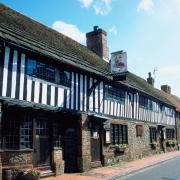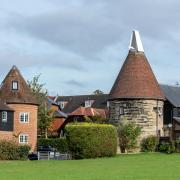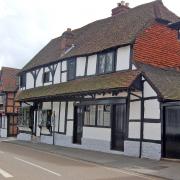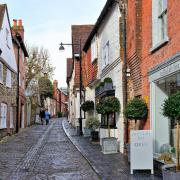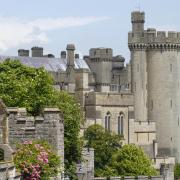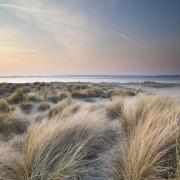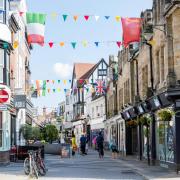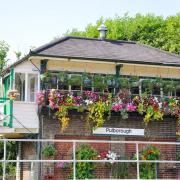Rural news from across the county this month.
CLA celebrates rural excellence in Sussex
Environment Secretary Owen Paterson MP presented the CLA Rose Bowl for the Sussex Young Farmer member of the year to Daniel Harris last month. The award was presented to Daniel for his commitment and contribution to farming and Young Farmers in Sussex.
Dan, who farms at Windmill Hill in East Sussex, joined Hailsham Young Farmers at the age of 16. He currently holds the role of Vice Chairman of Sussex County Young Farmers.
Robin Edwards, CLA Director South East said: “Dan sets a fantastic example to young people across Sussex and the south east. As well as managing his own farm and training to become a retained fire-fighter, he plays a hugely valuable role for Young Farmers.”
Environment Secretary Owen Paterson said: “It’s great to see the next generation of farmers doing so well. I hope Daniel’s achievements inspire more young talented people to take up a career in this growing industry, which contributes £9 bn to the UK economy and provides 450,000 jobs.”
--------------------------------------------------
Farm shop of the month - Eridge Shop, Gill Wing Farm, Eridge Green
This is Gill Wing Farm’s outlet for the produce they grow and prepare on the farm. Since opening in July 2011, the shop has been constantly adapting and growing to suit the customers’ needs and wants. Eventually the aim is to stock only products that are grown and produced on the farm’s land, but until the farm is a little more mature the shop offers a range of locally produced, high quality goods alongside their own. These range from juice and jams to chocolate and chutneys. You can also buy day-to-day goods alongside a great range of gifts.
01892 863343; www.gillwingfarm.co.uk
--------------------------------------------------
Entrepreneurial enterprise in the Sussex countryside
Vicki Ponsford worked in sales and marketing before starting her new business Trixsta Promotions (trixstapromotions.com) from her family home near Balcombe.
Trixsta provides hand-picked promotional staff for events. The business matches staff to your product or brand and communicates key messages by carefully selecting the right target audience.
As part of Trixsta’s repertoire they provide promotional staff nationwide for leafleting and product sampling, experiential marketing campaigns, roadshows, exhibitions and demonstrations. In the recent past clients have ranged from national magazines to local gym chains. “What makes it a great company to develop is that it can turn its hand to so many different things,” says Vicki. “The world is Trixsta’s oyster!”
Of the decision to base herself in the countryside as opposed to a more traditional, urban setting, Vicki says “Sussex has such excellent transport links that it seemed the ideal place to set up shop.” She continues: “It felt like a bold move at first, but now I couldn’t be happier with where I am – I get to enjoy unrivalled views while developing my business. I would recommend it to anyone.”
For more information call 01444 417285 or 07766 406557.
--------------------------------------------------
On my walk - Clouded yellow butterfly
The Clouded Yellow is primarily an immigrant to the UK, originating from north Africa and southern Europe, with numbers varying greatly from year to year. In more recent years, it has been shown that this species has successfully overwintered in Sussex. However, it is believed that the majority of individuals perish, since both larva and pupa of this continuously-brooded species are easily killed by damp and frost. But in good years this species can produce up to three generations here.
In flight, this species is often mistaken for one of the commoner white butterflies, but the orange-yellow colour is quite distinctive, so look out for it in a hedgerow near you this month.
--------------------------------------------------
Estate of the art - Lady Cowdray on life on a busy Sussex estate
Midsummer is a fantastic time for walking and watching everything growing before your eyes, especially the crops on our farms. Maize is a crop which grows very well in the warmer climate of the south of England and in particular performs well on the sandy ground at Cowdray Park. Across all of the farms around 175 hectares (435 acres) has been planted. It is a high energy forage crop which is made into silage and fed throughout winter alongside grass silage to our cows.
The cows are all out feeding primarily on grass. They are grazed using a paddock system. The optimum regeneration of a grass plant is three weeks; this is the time it takes to grow three leaves. Each of the Cowdray dairies is split up into 42 paddocks. The cows go into a fresh paddock after each milking so we use two paddocks each day; the cows do not therefore return to the same paddock for three weeks.
During the winter when the cows are housed, all of their feed requirements come from either conserved forage or concentrates. At this time of year it is a pleasant break for everyone not to have to feed the cows twice a day. It also eases the cost of feeding as well. They have all been ‘dried off’ and are being given a well-earned rest for approximately two months. The bulk of the cows will calf during August, September and October.
The Forestry Department has continued to be busy clearing up the damage from the winter gales and floods when many trees came down. Indeed they will be busy with this task for several months to come alongside their regular work. About 9,000 tonnes of timber have been harvested which have been sold into a very healthy market - including some which is going for export in a welcome reversal of a long-term trend.
The Estate is home to some of England’s most magnificent native trees hundreds of years old but there is a thriving business built around the varied mix of trees on the Estate including Larch, Norway Spruce, Douglas Fir, Scots Pine and Corsican Pine. Each one has a purpose - from long timbers used in building construction to quality wood for floorboards. Even the lesser quality remnants find a variety of uses such as making pallets, pulp or reconstitution into MDF. And of course there is a huge market for fence posts and fencing. Every year there is a carefully thought-out plan for the re-planting of new trees. This year about 6,000 oak trees will be planted at Cowdray.
Despite the storms, nature heals its wounds quite quickly and where fallen timber has been cut and cleared many such areas are now a mass of foxgloves and other wild flowers, adding to everyone’s enjoyment of a country walk on one of the many footpaths which criss-cross the Cowdray Estate.








